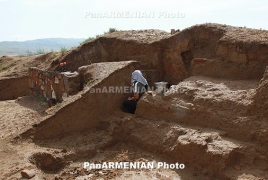
Stephen J Martin noticed large mounds, some 10ft tall, 30ft wide, along the side of the road as he drove through a remote part of northeast Brazil, The Independent says in an article.
“After 20 minutes, we were still driving through these, and I started saying, ‘Well, what are they?’” says Martin, an entomologist at the University of Salford who was in Brazil for research on the worldwide decline of honeybees.
He thought they might be piles of dirt displaced from the construction of the road. Instead, his companions told him, “Oh, they’re just termite mounds.”
“And I went, ‘You’re really sure about that?’” Martin recalls. “And they’re like: ‘Well, I don’t know. I think so.’”
On a subsequent trip, Martin met by chance Roy R Funch, an ecologist at Brazil’s State University of Feira de Santana who was already arranging to conduct radioactive dating to determine the age of the mounds.
“I said, ‘Look at those. There must be thousands of these mounds,’” Martin says. “And he went, ‘Nah, there’s millions.’”
Funch undercounted, too.
In research published earlier this month in the journal Current Biology, Martin, Funch and their colleagues reported the findings from years of investigations.
How many mounds? Some 200 million, the scientists estimate.
“They’re all over the place,” Funch says.
The cone-shape mounds are the work of Syntermes dirus, among the largest termite species at about half an inch long. The mounds, spaced on average about 60ft apart, are spread across an area as large as Britain.
“As humans, we have never built a city that big, anywhere,” Martin says.
The scientists were also surprised when they received results of the radioactive dating of 11 mounds. The youngest was about 690 years old. The oldest was at least 3,820 years old, close in age to the great pyramids of Giza in Egypt. “That just kind of blew me out of the water,” Funch says.
Martin says they used the minimum age suggested by the data, but the oldest mound could be more than twice as old.
The scientists also estimate that to build 200 million mounds, the termites had excavated 2.4 cubic miles of dirt – a volume equal to about 4,000 great pyramids of Giza. It is “the greatest known example of ecosystem engineering by a single insect species”, the scientists write.

